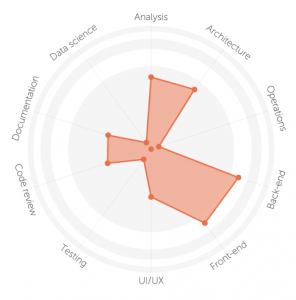About a year ago Forbes had an article, Top Executive Recruiters Agree There Are Only 3 True Job Interview Questions, that shared the “wisdom” of a handful of Executive Recruiters on the only things that you should really have to ask a candidate. There 3 questions where:
- Can you do the job?
- Will you love the job?
- Can we tolerate working with you?
Simple enough. Straight to the point, and you can assume for the $75,000 you’re paying, this is probably the extent of their screening as well!
In my Recruiting/HR career it’s probably the single most often asked question I get:
“What are your best interview questions?”
Then, you get to hear their questions. About how Google has some really great ones. Even, how I heard once about a company that asked people if they were an animal which animal would they be? Or, if you only pick one vegetable to eat the rest of your life, would it be carrots? It goes on, and on. Until you want to vomit!
The actual interview questions have very little impact in the success of the interview.
If you are interviewing anyone with some decent smarts, they are going to be able to ace your questions with little effort. What is important in interviewing is what you allow the candidate to get away with. I find that most recruiters and hiring managers to be way (I mean WAY!) to easy when it comes to questioning candidates. See if this example sounds familiar:
Interviewer: “John, looks like you left your last next to last company in May, but didn’t start your current position until July. Can you explain that gap?”
John: “Sure, you know I was doing a great job and I didn’t see myself moving up in that company, so I wanted to go find somewhere I could move up the ladder.”
Bam! At this point, most interviewers move on to the next questions. When clearly, John deflected, and someone needs to rip into some Gestapo interrogation tactics and find out what’s really going on. But they don’t, it would be a conflict, he might think we are rude, and well, we’ll move on…
Follow-up questions to original answers during an interview is a skill in itself. The only interview questions you ever need are the questions a Jealous Girlfriend asks when you come home on a Saturday morning around 3am. Shoot, just hire Jealous Girlfriends as your interviewers! They’ll get to the bottom of a candidates background!
The hardest interview I ever had was with a woman that was eventually my boss, who was a former U.S. Army interrogator. It was exhausting! It was painful! It was Awesome! I actually lost my voice (after the 7th hour – True Story!).
She was the ultimate Jealous Girlfriend, in fact, I think she trains Jealous Girlfriends in her spare time. There wasn’t an answer I could give her that she was satisfied with. She just kept at it, until I would slip and say something I really didn’t mean to. Once she smelled the blood, it was over.
The result? She hired the best talent (excluding me) in the entire organization by far! Bad hired did not make it past here interviewing technique.
So, don’t worry about having the “best” interview questions. Really any will do. Just don’t accept the first answer you get!

